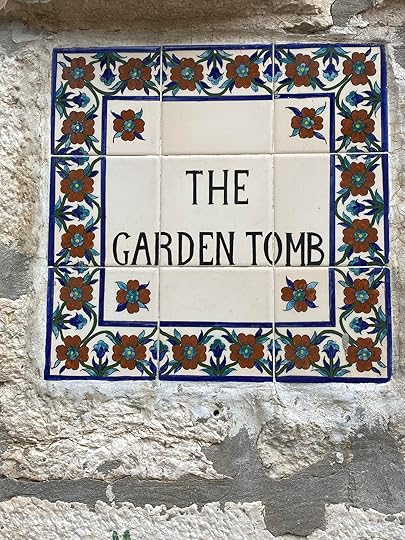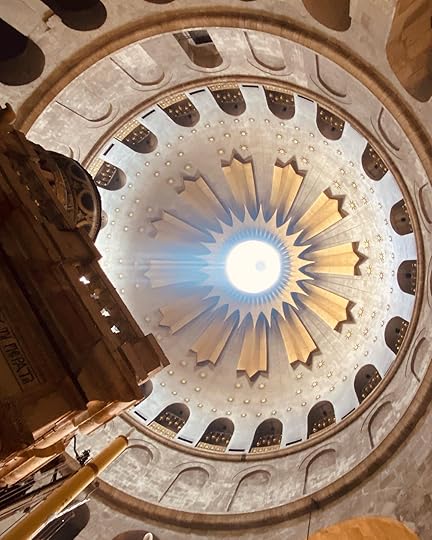X Marks More Than One Spot

Arguably the most important Easter scripture speaks not of the women running from the tomb in terror or Mary mistaking the naked Christ, newly delivered from the dead, for the Gardener. “By this Gospel you are saved,” the Apostle Paul writes, “for what I received I passed on as of chief importance: that Christ died for our sins in accordance with the scriptures, that he was buried, and that he was raised on the third day in accordance with the scriptures.” And Paul continues for thirty more verses without once bothering to mention a new hewn tomb or a stone rolled to the side or an angel of the Lord sitting on an image of Caesar. “If Christ has not been raised,” Paul argues, “our preaching is in vain and your faith is a waste of time…for if Christ has not been raised we are all liars and you are still in your sins.”
The oldest sustained Easter account comes not from Matthew, Mark, Luke or John but from St. Paul, and what St. Paul gives us isn’t a story with angels and an empty tomb. He gives us an argument that the grave really is empty. He marshals evidence that Jesus Christ IN FACT has been raised from the dead.
Christ was buried, Paul reminds them. As Paul puts it in the Book of Acts, “these things didn’t happen in a corner.” In other words, Christ’s empty tomb first was proclaimed to the very people— Paul names over five hundred of them— who had seen him die and who could have gone to his grave with a wheel-barrow and brought back for themselves his nail-scarred bones (had they been there).

For my part, I’ve long felt the strongest argument for the veracity of the Bible’s Easter Gospel is that Jesus of Nazareth was only one of hundreds of thousands crucified by the Roman Empire all of whose names are lost to us.
Hell, the Gospel texts themselves make no bones about disguising the fact that Jesus isn’t even the only person crucified by Rome on Good Friday. The Christ called Caesar crucified thousands upon thousands across the empire— it’s how he kept Pax in the Romana, yet out of all those scores of people who were nailed to a tree we know only the name of Mary’s Son.
Take these two facts together, and I am convinced that we would not know the name of Jesus Christ had God not raised him from the dead. Having visited Jerusalem the last three days and visited the holy sites, I still believe this is the strongest case for the resurrection of Jesus Christ from the dead.
Before I left for Israel a friend, Todd Brewer, wished me luck on my pilgrimage and said to me, “The Holy Land is a wonderful reminder how Christianity is a crazy, strange religion.” I didn’t know what he meant exactly until the final third of our journey brought us to the City of Peace founded by the King whose name means peace, Schlomo or Solomon. Two days ago we visited the Garden Tomb where Jesus’s body was laid on a stone resting table in a niche cut of the rock in what today looks like an English garden. A massive olive or grape press is nearby and, just down the path, a rock face whose indentions resemble the eye sockets and nose bridge of a skull.
Jesus, the Gospels tell us, was taken to a place called the skull and there they crucified him.
The place of the skull is on the side of what was once a road. Caesar preferred his electric chairs on thoroughfares since deterrence was his objective not justice. Almost fittingly, today the place of the skull sits in a bus parking lot with a shawarma restaurant on one side and the minaret of a mosque on the other side. Perhaps because of the minaret, the entrance to the Garden Tomb was guarded by two car loads of Israeli police who looked no older than my sophomore son.
The Garden Tomb was a moving and holy place, even to this tamed cynic.

Yesterday we visited the Church of the Holy Sepulchre. The name of the church is a misnomer as it houses four different churches. Thanks to the archeological acumen of the Byzantine Queen Helena, the Church of the Holy Sepulchre is the site of— get ready for it— Christ’s crucifixion and resurrection. Amidst a dizzying array of icons and frescoes, lanterns and censors, the Holy Sepulchre enshrines the remains of the cross, a rock stained with Christ’s blood, and pieces of the rock that the angel of the Lord drop-kicked open.
The Holy Land is an ancient time machine built with both old and living stones.
You can’t spend but a moment here without being confronted with the awkward fact that Christianity, like Judaism before it, is an embarrassingly historical faith.
Take Buddhism, for example. The truth or utility of Buddhism does not ultimately depend upon whether or not the Buddha ever sat under the Bodhi tree. The same is true of pagan myths (and most versions of progressive Christianity for that matter). But, as Paul says in 1 Corinthians 15, if Christ has not been raised from the dead— in history— then we are the most pathetic people in the world. We’re false witnesses. Liars even. Worse, we violate the first commandment as a first principle, worshipping someone other than Yahweh as Lord. You don’t have to believe it, but you owe it to the first Christians to take their testimony or leave it. They didn’t believe the resurrection message was a metaphor or a myth. They didn’t think Easter was really about timeless truths. They thought it was true. That it actually happened. In history. At Jerusalem. Under Pontius Pilate. During the reign of Caesar Augustus. On the Sunday morning after the Passover when he died between noon and 3 in 33AD. Around tea time, as Monty Python’s Life of Brian puts it. Christianity is not a worldview. Christianity is not a philosophy. It’s not a social program or a political agenda. It’s not advice or a way of life or helpful lessons for your kids. Christianity is not a tradition of teachings or a set of spiritual practices. It is not even a morality.
The Gospel is news.
It’s an announcement of an event that has happened outside of you, in history, that bears implications for you.
But an announcement is not an attestation.
Sitting next to the Garden of Gethsemane, the Church of All Nations, according to Catholic teaching, is the site of Mary’s bodily ascension into heaven. Just across the street, however, near the city wall, in a Greek Orthodox graveyard is the tomb of Mary, who did not ascent into heaven but awaits the return of the Son like all the rest of his brothers and sisters.
In Israel, X sometimes marks more than one spot.The City of David is replete with these inconsistent, often contradictory memorials, and, Todd’s right, somehow this is exactly how it should be for Christianity. While the Holy Land confronts you with the Gospel’s unabashed, inconvenient claim to historicity, it also elides any possibility for you to receive the glad tidings with any kind of self-generated confidence or evidence-derived certainty.
The promise of the Gospel is that, in Christ, you were born again on a Friday afternoon in 32 AD, on a hill, a few minutes walk beyond the Temple Mount. It happened. In history. But we can’t tell you where exactly. Jesus says he can make even the stones cry out, but, in the meantime, none of the available rocks can prove our message beyond a shadow of a doubt.
In a city dominated by Catholic and Orthodox churches, I departed today, smiling, that Christianity’s imperfect and elusive historical record here is an unwitting witness to the wisdom of the Protestant Reformation.
Protestantism doesn’t have the impressive cathedrals here in the Holy Land. We don’t have any relics or sites worth the gas money. There are no exquisitely details mosaics from the Reformation period here. What we do have is the unavoidable, abiding takeaway that, at the end of the day, the historicity of Christianity notwithstanding, there is nevertheless no way to receive the Gospel on any other basis but faith alone.
We can mark the spots on the pilgrim’s maps with X’s, but the Gospel is the same here as anywhere else. Ultimately, all we can do is trust. All we can do is what Adam and Eve would not do— take God at his word.
Share Tamed Cynic by Jason Micheli
 Read Tamed Cynic by Jason Micheli in the new Substack appNow available for iOSGet the app
Read Tamed Cynic by Jason Micheli in the new Substack appNow available for iOSGet the app
Jason Micheli's Blog
- Jason Micheli's profile
- 13 followers



